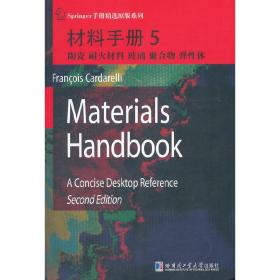
材料手册5陶瓷、耐火材料、玻璃、聚合物、弹性体
全新正版现货
¥ 54.8 7.2折 ¥ 76 全新
库存2件
作者(美)卡达雷利 主编
出版社哈尔滨工业大学出版社
ISBN9787560344515
出版时间2014-04
装帧平装
开本16开
纸张胶版纸
定价76元
货号23488906
上书时间2023-10-19
- 在售商品 暂无
- 平均发货时间 21小时
- 好评率 暂无
- 最新上架
商品详情
- 品相描述:全新
- 正版全新
- 商品描述
-
【内容简介】:
卡达雷利编著的《材料手册(5陶瓷耐火材料玻璃聚合物弹性体)/Springer手册精选原版系列》提供所有类别的材料的物理和化学性质,是一本简洁的手边工具书。第二版与第一版的差别是扩大新的家庭用的材料。但重点是每一类常见的工业材料的性能。本分册内容为原手册第10、11章陶瓷、耐火材料、玻璃、聚合物、弹性体的介绍。
【目录】:
Introduction
10 Ceramics, Refractories, and Glasses
10.1 Introduction and Definitions
10.2 Raw Materials for Ceramics, Refractories and Glasses
10.2.1 Silica
10.2.1.1 Quartz, Quartzite, and Silica Sand
10.2.1.2 Diatomite
10.2.1.3 Fumed Silica
10.2.1.4 Silica Gels and Sol-Gel Silica
10.2.1.5 Precipitated Silica
10.2.1.6 Microsilica
10.2.1.7 Vitreous or Amorphous Silica
10.2.2 Aluminosilicates
10.2.2.1 Fireclay
10.2.2.2 China Clay
10.2.2.3 Ball Clay
10.2.2.4 Other Refractory Clays
10.2.2.5 Andalusite, Kyanite, and Sillimanite
10.2.2.6 Mullite
10.2.3 Bauxite and Aluminas
10.2.3.1 Bauxite
10.2.3.2 Alumina Hydrates
10.2.3.3 Transition Aluminas (TrA)
10.2.3.4 Calcined Alumina
10.2.3.5 Tabular Alumina
10.2.3.6 White Fused Alumina
10.2.3.7 Brown Fused Alumina
10.2.3.8 Electrofused Alumina-Zirconia
10.2.3.9 High-Purity Alumina
10.2.4 Limestone and Lime
10.2.5 Dolomite and Doloma
10.2.5.1 Dolomite
10.2.5.2 Calcined and Dead Burned Dolomite (Doloma)
10.2.6 Magnesite and Magnesia
10.2.6.1 Magnesite
10.2.6.2 Caustic Seawater and Calcined Magnesia
10.2.6.3 Dead Burned Magnesia
10.2.6.4 Electrofused Magnesia
10.2.6.5 Seawater Magnesia Clinker
10.2.7 Titania
10.2.7.1 Rutile
10.2.7.2 Anatase
10.2.7.3 Brookite
10.2.7.4 Anosovite
10.2.7.5 Titanium Sesquioxide
10.2.7.6 Titanium Monoxide or Hongquiite
10.2.7.7 Titanium Hemioxide
10.2.7.8 Andersson-Magn~li Phases
10.2.8 Zircon and Zirconia
10.2.8.1 Zircon
10.2.8.2 Zirconia
10.2.9 Carbon and Graphite
10.2.9.1 Description and General Properties
10.2.9.2 Natural Occurrence and Mining
10.2.9.3 Industrial Preparation and Processing
10.2.9.4 Industrial Applications and Uses
10.2.10 Silicon Carbide
10.2.10.1 Description and General Properties
10.2.10.2 Industrial Preparation
10.2.10.3 Grades of Silicon Carbide
10.2.11 Properties of Raw Materials Used in Ceramics, Refractories,
and Glasses
10.3 Traditional Ceramics
10.4 Refractories
10.4.1 Classification of Refractories
10.4.2 Properties of Refractories
10.4.3 Major Refractory Manufacturers
10.5 Advanced Ceramics
10.5.1 Silicon Nitride
10.5.1.1 Description and General Properties
10.5.1.2 Industrial Preparation and Grades
10.5.2 Silicon Aluminum Oxynitride (SiA1ON)
10.5.3 Boron Carbide
10.5.3.1 Description and General Properties
10.5.3.2 Industrial Preparation
10.5.3.3 Industrial Applications and Uses
10.5.4 Boron Nitride
10.5.4.1 Description and General Properties
10.5.4.2 Industrial Preparation
10.5.4.3 Industrial Applications and Uses
10.5.5 Titanium Diboride
10.5.5.1 Description and General Properties
10.5.5.2 Industrial Preparation and Processing
10.5.5.3 Industrial Applications and Uses
10.5.6 Tungsten Carbides and Hardmetal
10.5.6.1 Description and General Properties
10.5.6.2 Industrial Preparation
10.5.6.3 Industrial Applications and Uses
10.5.7 Practical Data for Ceramists and Refractory Engineers
10.5.7.1 Temperature of Color
10.5.7.2 Pyrometric Cone Equivalents
10.6 Standards for Testing Refractories
10.7 Properties of Pure Ceramics (Borides, Carbides, Nitrides, Silicides,
and Oxides)
10.8 Further Reading
10.8.1 Traditional and Advanced Ceramics
10.8.2 Refractories
10.9 Glasses
10.9.1 Definitions
10.9.2 Physical Properties of Glasses
10.9.3 Glassmaking Processes
10.9.4 Further Reading
10.10 Proppants
10.10.1 Fracturing Techniques in Oil-WellProduction
10.10.1.1 Hydraulic Fracturing
10.10.1.2 Pressure Acidizing
10.10.2 Proppant and Frac Fluid Selection Criteria
10.10.2.1 Proppant Materials
10.10.2.2 Frac Fluids
10.10.2.3 Properties and Characterization of Proppants
10.10.2.4 Classification of Proppant Materials
10.10.2.5 Production of Synthetic Proppants
10.10.2.6 Properties of Commercial Proppants
10.10.2.7 Proppant Market
10.10.2.8 Proppant Producers
10.10.3 Further Reading
11 Polymers and Elastomers
11.1 Fundamentals and Definitions
11.1.1 Definitions
11.1.2 Additives and Fillers
11.1.3 Polymerization and Polycondensation
11.2 Properties and Characteristics of Polymers
11.2.1 Molar Mass and Relative Molar Mass
11.2.2 Average Degree of Polymerization
11.2.3 Number-, Mass- and Z-Average Molar Masses
11.2.4 Glass Transition Temperature
11.2.5 Structure of Polymers
11.3 Classification of Plastics and Elastomers
11.4 Thermoplastics
11.4.1 Naturally Occurring Resins
11.4.1.1 Rosin
11.4.1.2 Shellac
11.4.2 Cellulosics
11.4.2.1 Cellulose Nitrate "'i
11.4.2.2 Cellulose Acetate (CA)
11.4.2.3 Cellulose Propionate (CP)
11.4.2.4 Cellulose Xanthate
11.4.2.5 Alkylcelluloses
11.4.3 Casein Plastics
11.4.4 Coumarone-Indene Plastics
11.4.5 Polyolefins or Ethenic Polymers
11.4.5.3 Polybutylene (PB)
11.4.6 Polymethylpentene (PMP)
11.4.7 Polyvinyl Plastics
11.4.7.1 Polyvinyl Chlorides (PVCs)
11.4.7.2 Chlorinated Polyvinylchloride (CPVC)_
11.4.7.3 Polyvinyl Fluoride (PVF)
11.4.7.4 Polyvinyl Acetate (PVA)
11.4.8 Polyvinylidene Plastics
11.4.8.1 Polyvinylidene Chloride (PVDC)
11.4.8.2 Polyvinylidene Fluoride (PVDF)
11.4.9 Styrenics
11.4.9.1 Polystyrene (PS)
11.4.9.2 Acrylonitrile Butadiene Styrene (ABS)
11.4.10 Fluorinated Polyolefins (Fluorocarbons)
11.4.10.1 Polytetrafluoroethylene (PTFE)
11.4.10.2 Fluorinated Ethylene Propylene (FEP)
11.4.10.3 Perfluorinated Alkoxy (PFA)
11.4.10.4 Polychlorotrifluoroethylene (PCTFE)
11.4.10.5 Ethylene-Chlorotrifluoroethylene Copolymer (ECTFE).
11.4.10.6 Ethylene-Tetrafluoroethylene Copolymer (ETFE)
11.4.11 Acrylics and Polymethyl Methacrylate (PMMA)
11.4.14 Polyimides (PI)
11.4.15 Polyacetals (PAc)
11.4.16 Polycarbonates (PC)
11.4.17 Polysulfone (PSU)
11.4.18 Polyphenylene Oxide (PPO)
11.4.19 Polyphenylene Sulfide (PPS)
11.4.20 Polybutylene Terephthalate (PBT)
11.4.21 Polyethylene Terephthalate (PET)
11.4.22 Polydiallyl Phthalate (PDP)
11.5 Thermosets
11.5.1 Aminoplastics
11.5.2 Phenolics
11.5.3 Acrylonitrile-Butadiene-Styrene (ABS)
11.5.4 Polyurethanes (PUR)
11.5.5 Furan Plastics
11.5.6 Epoxy Resins (EP)
11.6 Rubbers and Elastomers
11.6.1 Natural Rubber (NR)
11.6.2 Trans-Polyisoprene Rubber (PIR)
11.6.3 Polybutadiene Rubber (BR)
11.6.4 Styrene Butadiene Rubber (SBR)
11.6.5 Nitrile Rubber (NR)
11.6.6 Butyl Rubber (IIR)
11.6.7 Chloroprene Rubber (CPR)
11.6.8 Chlorosulfonated Polyethylene (CSM)
11.6.9 Polysulfide Rubber (PSR)
11.6.10 Ethylene Propylene Rubbers
11.6.11 Silicone Rubber
11.6.12 Fluoroelastomers
11.7 Physical Properties of Polymers
11.8 Gas Permeability of Polymers
11.9 Chemical Resistance of Polymers
11.10 IUPAC Acronyms of Polymers and Elastomers
11.11 Economic Data on Polymers and Related Chemical Intermediates
11.11.1 Average Prices of Polymers
11.11.2 Production Capacities, Prices and Major Producers of Polymers
and Chemical Intermediates
11.12 Further Reading
Index
相关推荐
-

材料手册:5:陶瓷、耐火材料、玻璃、聚合物、弹体
全新北京
¥ 46.40
-

材料手册:5:陶瓷、耐火材料、玻璃、聚合物、弹体
全新保定
¥ 45.45
-

材料手册5 陶瓷、耐火材料、玻璃、聚合物、弹性体
全新北京
¥ 57.54
-

材料手册:5:陶瓷、耐火材料、玻璃、聚合物、弹性体
全新广州
¥ 45.54
-

材料手册5:陶瓷、耐火材料、玻璃、聚合物、弹性体
全新北京
¥ 36.48
-

材料手册5:陶瓷、耐火材料、玻璃、聚合物、弹性体
全新无锡
¥ 49.48
-

材料手册5:陶瓷、耐火材料、玻璃、聚合物、弹性体
九五品南京
¥ 31.90
-

材料手册5:陶瓷、耐火材料、玻璃、聚合物、弹性体
全新成都
¥ 43.70
-

材料手册5:陶瓷、耐火材料、玻璃、聚合物、弹性体
全新北京
¥ 38.00
-

材料手册5:陶瓷、耐火材料、玻璃、聚合物、弹性体
全新北京
¥ 38.00
— 没有更多了 —



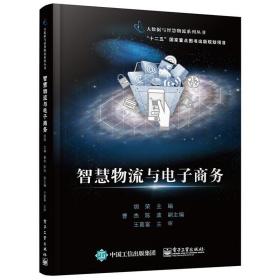
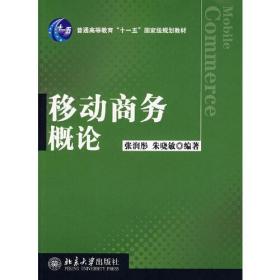
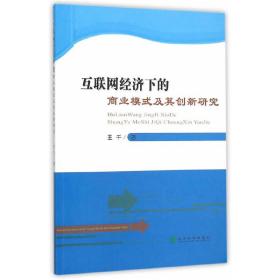

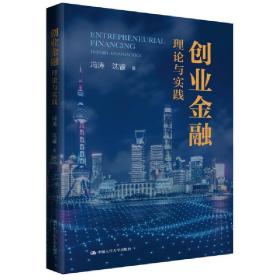

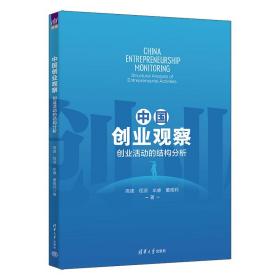



以下为对购买帮助不大的评价